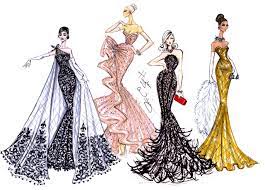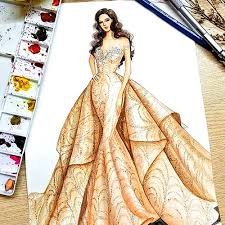What is Apparel Designing? Best Course for Apparel Designing
Apparel designing refers to the process of creating clothing, accessories, and other textile products, from concept to finished product. It involves designing, sketching, pattern-making, sewing, and other techniques to create unique and functional clothing and accessories that meet the needs and preferences of consumers.

Apparel designers use their creativity, knowledge of textiles, and understanding of fashion trends to create new designs that reflect current trends and appeal to a wide range of consumers. They also consider factors such as fabric quality, durability, and cost-effectiveness when creating their designs.

Here are some of the key aspects of apparel designing:
- Concept Development:
The first step in apparel designing is to develop a concept for the product. This involves understanding the target market and their preferences, as well as current fashion trends. Apparel designers may also consider other factors such as the season, the occasion for which the garment is intended, and the desired level of formality.
- Sketching and Designing:
Once the concept is developed, the designer will create sketches and designs for the garment or accessory. This involves drawing and sketching the product from different angles and considering details such as color, texture, and fabric choice. Designers may use computer-aided design (CAD) software to create their designs, which can be quickly and easily modified as needed.
- Pattern-Making:
After the design is finalized, the designer will create a pattern for the garment. This involves taking measurements and using them to create a pattern that can be used to cut the fabric for the garment. Pattern-making is a crucial step in the apparel designing process, as it ensures that the garment fits well and is comfortable to wear.
- Fabric Selection:
Choosing the right fabric for the garment is important to ensure that it meets the desired look, feel, and functionality. Designers consider factors such as the weight, texture, color, and drape of the fabric when selecting materials. They may also consider the environmental impact of the fabric, as well as its cost.
- Sewing and Construction:
Once the fabric is cut, the garment is sewn and constructed. This involves using a range of techniques such as stitching, seaming, hemming, and finishing to create a high-quality garment. Apparel designers may also work with other professionals such as seamstresses, tailors, and manufacturers to bring their designs to life.
- Quality Control:
Before the garment is sold or released, it undergoes a thorough quality control process. This involves checking for defects, ensuring that it meets the desired specifications, and making any necessary adjustments. Quality control is important to ensure that the garment meets the expectations of the designer and the consumer.

In conclusion, apparel designing is a complex and multifaceted process that involves a range of skills and techniques. It requires creativity, technical expertise, and attention to detail to create garments and accessories that meet the needs and preferences of consumers. Successful apparel designers must stay up-to-date with the latest trends, materials, and techniques, and be willing to adapt to changing market conditions. With dedication, hard work, and a passion for fashion, anyone can pursue a career in apparel designing.
Best Course for Apparel Designing:
If you are interested in pursuing a career in apparel designing, there are a variety of courses available that can help you develop the necessary skills and knowledge. Here are some of the best courses for apparel designing:

- Bachelor of Fine Arts in Fashion Design:
A Bachelor of Fine Arts (BFA) in Fashion Design is a four-year degree program that provides a comprehensive education in fashion design. Students learn about fashion history, design principles, garment construction, pattern-making, and textiles. They also have the opportunity to develop their own design style and create a portfolio of work that showcases their skills. This degree program prepares students for careers in apparel design, fashion merchandising, and related fields.
- Diploma in Fashion Design:
A Diploma in Fashion Design is a one- to two-year program that provides students with a foundation in fashion design principles and techniques. Students learn about sketching, pattern-making, sewing, and garment construction, as well as fashion history and current trends. This program prepares students for entry-level positions in apparel design, as well as for further study in fashion design.
- Certificate in Apparel Design and Production:
A Certificate in Apparel Design and Production is a short-term program that provides students with practical skills in garment construction and production. Students learn about pattern-making, sewing, cutting, and finishing, as well as quality control and production management. This program is ideal for individuals who want to develop hands-on skills in apparel design and production.
- Master of Fine Arts in Fashion Design.
A Master of Fine Arts (MFA) in Fashion Design is a two- to three-year program that provides advanced training in fashion design principles and techniques. Students learn about fashion research, design innovation, and sustainability in fashion, as well as the business aspects of the fashion industry. This degree program prepares students for leadership roles in apparel design, fashion merchandising, and related fields.
- Online Courses and Workshops:
There are also a variety of online courses and workshops available for individuals who want to develop their skills in apparel design. These courses cover topics such as sketching, pattern-making, draping, sewing, and garment construction. Online courses and workshops are a convenient and affordable way to learn about apparel design, and many are offered by leading fashion schools and industry professionals.

When choosing a course or program for apparel design, it’s important to consider factors such as the curriculum, the reputation of the school or program, the cost, and the location. It’s also a good idea to research the career prospects for graduates of the program, as well as any networking opportunities that may be available. By carefully considering your options and choosing a program that meets your needs and goals, you can take the first step towards a successful career in apparel design.





